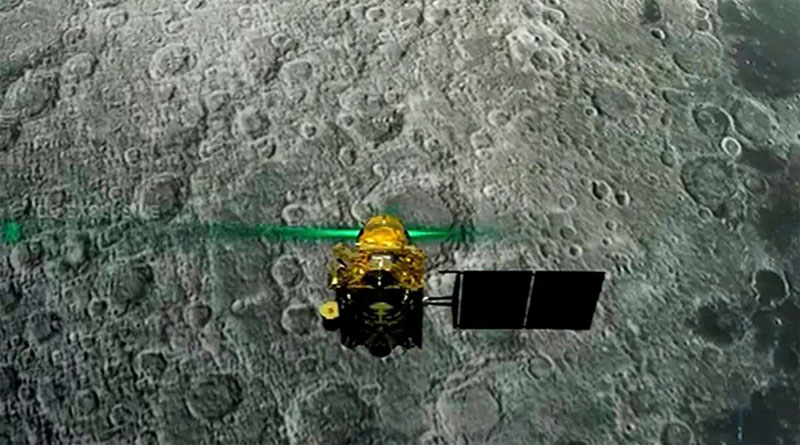BENGALURU, Oct 8:
The X-ray spectrometer ‘CLASS’ on the Chandrayaan-2 orbiter has mapped an abundance of sodium on the moon for the first time, according to the Indian Space Research Organisation.
Chandrayaan-1 X-ray Fluorescence Spectrometer (C1XS) detected sodium from its characteristic line in X-rays which opened up the possibility of mapping the amount of sodium on the moon, ISRO said.
In a recent work published in ‘The Astrophysical Journal Letters’, Chandrayaan-2 mapped the abundance of sodium on the Moon for the very first time using CLASS (Chandrayaan-2 Large Area Soft X-ray Spectrometer), the national space agency said in a statement on Friday.
“Built at the U R Rao Satellite Centre of ISRO in Bengaluru, CLASS provides clean signatures of the sodium line thanks to its high sensitivity and performance,” the statement said.
The study finds that a part of the signal could be arising from a thin veneer of sodium atoms weakly bound to the lunar grains.
These sodium atoms can be nudged out of the surface by solar wind or ultraviolet radiation more easily than if they were part of the lunar minerals. Also shown is a diurnal variation of the surface sodium that would explain the continuous supply of atoms to the exosphere, sustaining it, the statement said.
An interesting aspect that widens the interest in this alkali element is its presence in the wispy atmosphere of the moon, a region so thin that the atoms there rarely meet.
This region, termed an ‘exosphere’, begins at the surface of the moon and extends several thousand kilometres merging into the interplanetary space, the statement noted.
“The new findings from Chandrayaan-2 provide an avenue to study surface-exosphere interaction on the moon which would aid development of similar models for mercury and other airless bodies in our solar system and beyond,” the ISRO said. (PTI)


